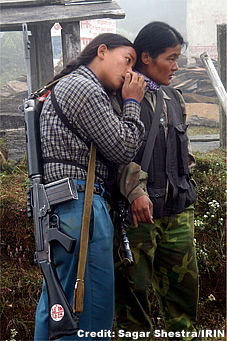During the conflict, civilians were not allowed to move freely due to restrictions enforced by the security forces and the danger of getting caught in battles between the Nepalese Army and the Maoists. But now this has changed and lives could be at risk. The arms management agreement aims to remove improvised explosive devices (IEDs) made by the Maoists and landmines planted by the government within 60 days of its signing in December, but some experts claim that would not be possible technically.
According to the International Campaign to Ban Landmines, Nepal is among the top 10 countries for civilian casualties from mine and IED explosions. About 57 percent of victims are children, who are most vulnerable because the devices were placed randomly near households and in fields, where children play. There are more than 12,000 mines in 50 landmine fields - including anti-personnel and command-detonated landmines in 37 districts, according to the Nepalese Army. There are no accurate figures on IEDs, but the army and UNICEF estimate between 100,000 and 500,000 have been planted around the country. The Nepalese government has not yet signed the International Landmine Ban Treaty, but following the peace agreement between the authorities and the Maoists in 2006, human rights agencies and the UN are calling on Kathmandu to sign up this year. "We will be organising a massive campaign by the end of this month about the explosive devices as civilians are most at risk," said Laurenge. The
Nepalese Army has 15 explosive ordnance disposal teams on standby to deal
with all types of devices, including IEDs and landmines. However, clearing
49 anti-personnel minefields is a huge task that will probably require
additional international support, said Laurenge.
Copyright © UN Office for the Coordination of Humanitarian Affairs 2007 [ This report does not necessarily reflect the views of the United Nations] Integrated Regional Information Networks (IRIN), part of the UN Office for the Coordination of Humanitarian Affairs (OCHA).
|




